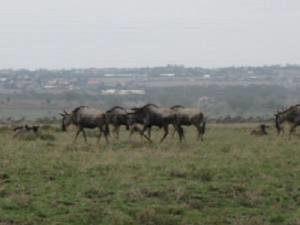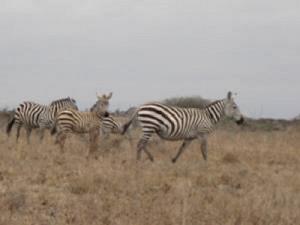Caroline Bosire
The project aims to establish the impact of wildlife targeted interventions on the wildlife species, especially the highly mobile ones, in the Athi Kaputiei Plains in Kenya.

Wildebeeste.
Recent publications have shown that wildlife in Kenya is disappearing at an alarming rate (Ogutu, 2009; Western 2009). These declines have been attributed to such factors as changes in land tenure, drought and habitat fragmentation. The increasing rate of land conversion from group ranches to individually owned parcels has led to a decrease in the access to vital feeding and breeding grounds. A good example is the almost complete breakdown of the migration of wildebeest (Connocheates taurinus) between the Athi Kaputiei dry wet season range and the Nairobi National Park (NNP). However, there is ongoing work with the communities living within the Athi Kaputiei plains on land lease with The Wildlife Foundation (TWF) and Kenya Wildlife Services (KWS) that is meant to keep land open for free movement of wildlife.

Zebras.
Conservation of this landscape is important for many reasons. Firstly it will ensure that there is continuity in such activities as pastoralist livestock raring, and tourism both local and international. Secondly it ensures that there is large enough range for such species as the migratory wildebeest and zebra. Blocking of these movement routes for both livestock and wildlife will lead to the collapse of both the national park and the pastoralism that is being practised in the area.
By providing empirical information on the movement of wildlife, the project will enable decision making on the importance of particular areas to the various activities that are going on in the area. Such issues as setting up of conservation areas would require information on habitat use and its accessibility for wildlife. Information on water availability year round will also inform on issues related to sustainability of certain activities now and in the future.